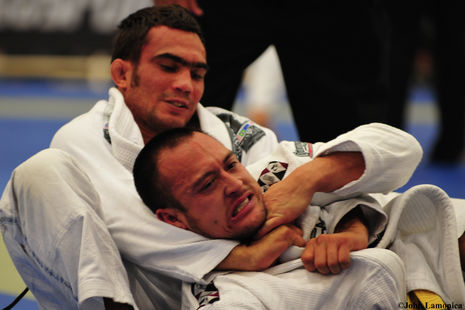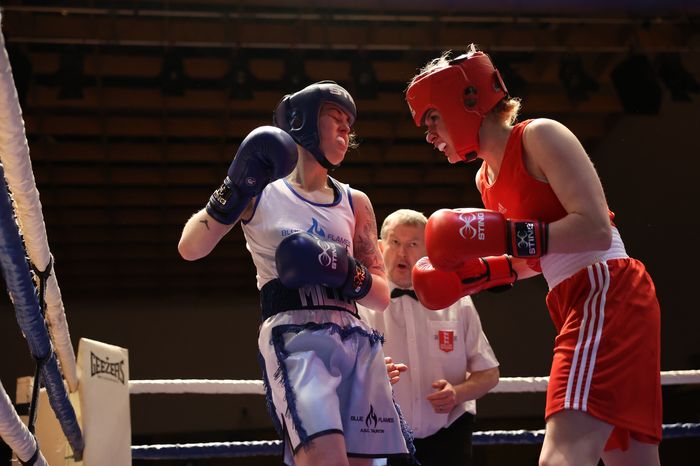The first rule of Brazilian jiu-jitsu is: you always talk about Brazilian jiu-jitsu
Issac Fung discusses the rise of the grappling sport founded in South America and makes the case for giving it a go

Over the last twelve months, I have spent much of my free time being thrown, pinned to the ground, armlocked, and strangled. What is more, I have ended up all the better for it. Training in the art of Brazilian jiu-jitsu has been one of the most enjoyable and edifying experiences of my life, and my only regret is that I didn’t take it up sooner.
I first learned about Brazilian jiu-jitsu (‘BJJ’ for short) from watching videos of the first UFCs, where fighters of various disciplines would duke it out in a cage until someone submitted or was knocked out. Being unversed in combat sports, I originally thought that it would be the big, steroid-pumped brawlers who came out on top. So, I was shocked when it was Royce Gracie, the 180lb BJJ expert, who ended up victorious. Unlike the other fighters, Gracie refused to stay on his feet to exchange punches: he would instead take his opponent to the ground and finish him with a submission hold. The starkest demonstration of his superiority was in his 1994 fight against the 235lb Kimo Leopoldo, where Gracie survived a four-minute battering from the bigger man before winning the fight via armbar.
“[BJJ] is large enough that you can easily find professional, high-quality instruction, yet small enough that you can still be taught by world champions and compete against the pros”
For me, the best thing about BJJ is knowing for certain that it works. For one, there is plentiful evidence that BJJ is an effective fighting art, and its roots in vale tudo (‘anything goes’) fights in Brazil makes it particularly suitable for self-defence and mixed martial arts. Most important, however, is that BJJ is thoroughly stress tested. Because BJJ is a martial art which focuses on grappling, ground fighting, and submissions—and not on strikes—the risk of injury and concussion is low, allowing practitioners to repeatedly spar with each other at full intensity to figure out which techniques actually work. Essentially, BJJ is like a computer game where you have infinite lives. When you are caught in a submission hold, all you have to do is “tap out” to surrender and reset to the beginning. I was once submitted 13 times in five minutes, which means I would have been choked unconscious and had my limbs broken 13 times if I were in a real fight. However, because I could just tap, I remained completely injury free and trained the very next day.

BJJ is also a lot of fun. Many first-day beginners are under the mistaken impression that training sessions consist of gladiatorial death matches against hardened fighters. This cannot be further from the truth. Most of the people I train with are teachers, computer programmers, and corporate lawyers (interestingly, a disproportionately high number of my training partners seem to work in law or finance), and they are more than willing to help less experienced people improve. I have had training partners who let me choke them to the verge of unconsciousness—repeatedly—so I could learn how to do a rear naked choke properly. Rest assured as well that most rolls (the BJJ term for sparring rounds) are playful affairs, with both sides giving each other openings to try new moves. If you’re struggling to imagine what this looks like, just think of BJJ as a form of adversarial yoga.
“BJJ is like a computer game where you have infinite lives”
Compared to other martial arts like boxing or judo, BJJ remains a niche sport. The main problem is that most people don’t know what it is - they usually assume it is an offshoot of karate. Amongst those who do know, fear and trepidation remain the greatest barriers towards participation. People find walking into a gym and going into simulated combat with strangers to be scary, and understandably so. Nobody wants to get injured, and nobody wants to lose a fight.
Fortunately, BJJ is rapidly growing. As mixed martial arts have become firmly embedded in the mainstream, public awareness of BJJ is at an all-time high. The proliferation of BJJ across modern media and the internet has also played a role. It is hard to overstate, for example, the influence of Joe Rogan, who not only hosts the largest podcast in the world but is also a BJJ black belt and a colour commentator for the UFC (check out Rogan’s interview with grappling coach John Danaher for one of the best discussions of BJJ out there).
The explosive growth of BJJ has also created a positive feedback loop. Because more and more people are doing BJJ, there are also more gyms popping up to meet the demand. Even better, BJJ is currently in the Goldilocks zone being a niche sport. It is large enough that you can easily find professional, high-quality instruction, yet small enough that you can still be taught by world champions and compete against the pros. You may not be able to take swimming lessons from Michael Phelps, but you can be taught BJJ by Roger Gracie (the most dominant BJJ competitor in history) and roll with a former UFC middleweight champion.
Finally, because BJJ is still a young sport, there have been continual advancements in technical knowledge. Competitors today have access to an array of techniques not available to their predecessors, ranging from leglock systems to specialised positions like worm guard. It is not an exaggeration to say that the top competitors today are far superior in physical conditioning and theoretical understanding to competitors from twenty years ago.
As such, there is no better time to start BJJ than now. BJJ is going through a golden period of expansion, and it would be a shame if students at Cambridge missed out on the boom.
 Comment / Cambridge students are too opinionated 21 April 2025
Comment / Cambridge students are too opinionated 21 April 2025 Comment / Does the AI revolution render coursework obsolete?23 April 2025
Comment / Does the AI revolution render coursework obsolete?23 April 2025 Comment / Cambridge’s tourism risks commodifying students18 April 2025
Comment / Cambridge’s tourism risks commodifying students18 April 2025 News / News in brief: campaigning and drinking20 April 2025
News / News in brief: campaigning and drinking20 April 2025 Interviews / Meet the Chaplain who’s working to make Cambridge a university of sanctuary for refugees20 April 2025
Interviews / Meet the Chaplain who’s working to make Cambridge a university of sanctuary for refugees20 April 2025






